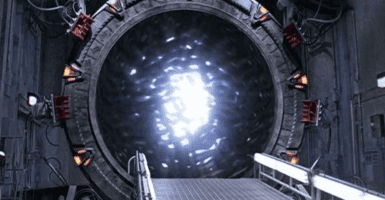Virgin Galactic Expands Its Space Horizons With Launcher One
This article is more than 2 years old
This Wednesday at the Farnborough International Air Show, Indiana Bowie, otherwise known as Sir Richard Branson, just announced a new venture for the space tourism company Virgin Galactic. Even though they haven’t completed testing their vehicle Space Ship Two, a plan to put satellites into space using White Knight Two as a launch platform is already in the works. The new vehicle will have Virgin Galactic’s killer trademark paint job, as well as their easy-to-remember naming scheme. Enter “Launcher One”.
Launcher One will launch like a missile from the space plane carrier White Knight Two with the ability to put small 500lb satellites into low earth orbit (LEO). Due to the weight and altitude constraints, this won’t replace normal methods for launching satellites anytime soon, but it will create a far cheaper method for getting small payloads to LEO. By far cheaper, they mean only $10 million. That may sound expensive, but a satellite launch costs anywhere from $50 to about $400 million dollars, so Launcher One will be a steal for universities or start up companies that need to get something into orbit on a budget.
New space ventures don’t go very far without customers though, so Virgin Galactic also announced that it already has four partners for it’s newly announced launch system. According to Parabolic Arc, Virgin Galactic has signed a deal with Planetary Resources to launch its Arkyd space telescopes to search for targets for future asteroid mining ventures. This low cost option at putting the small LEO space telescopes in orbit is exactly what Planetary Resources needs if it wants to make its far-reaching space mining plan viable.
While not evenly matched, it is interesting to note that this puts Virgin Galactic and its White Knight Two carrier plane in competition with White Knight One’s designer and its financial backer, Burt Rutan and Paul Allen. Rutan and Allen are currently a part of Stratolaunch Systems, a company that is working to create a much larger carrier plane capable of launching smaller versions of SpaceX’s Falcon 9 rockets to orbit. The Stratolaunch carrier would, in theory, be capable of launching a manned Dragon module to orbit as well as satellites and unmanned cargo modules to dock with the International Space Station. The carrier would allow for cheaper launch costs as well, although the sheer size and payload capacity of the rocket would mean that it would cost more than Launcher One’s.
Test flights for Launcher One are scheduled for 2015, with commercial flights starting as early as 2016.












